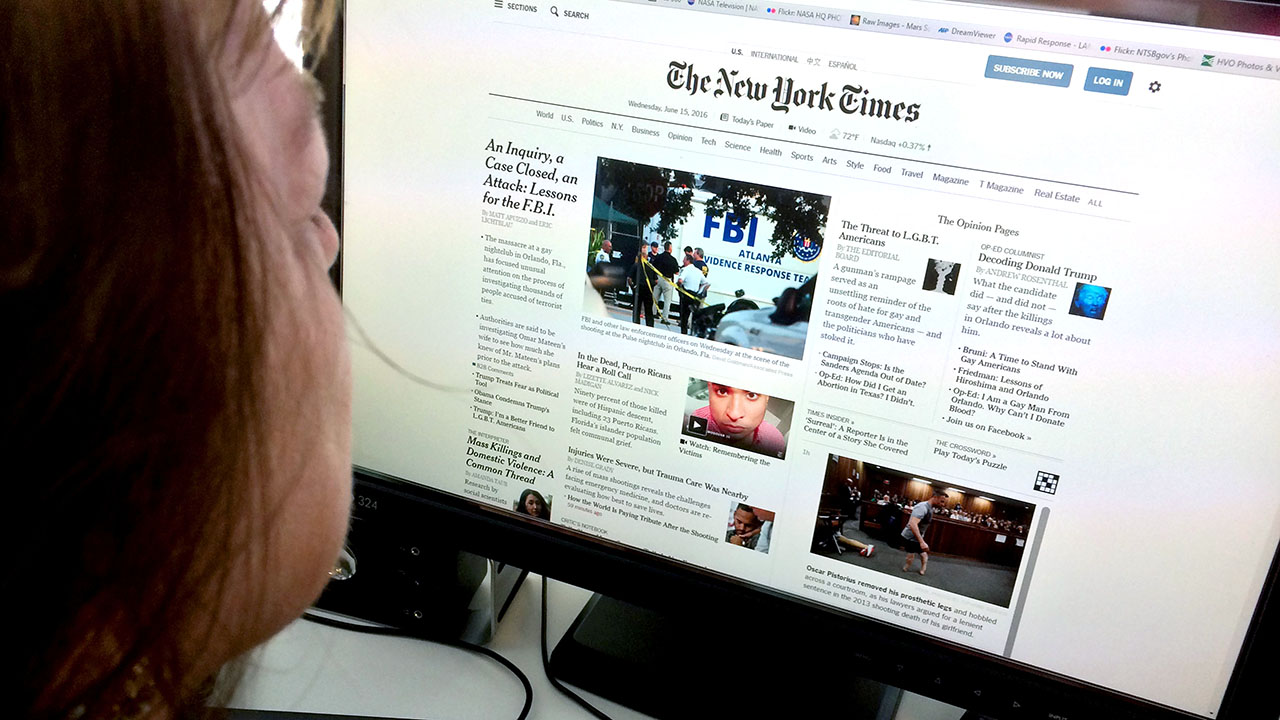DW News Bringing In-Depth Analysis on World Politics
DW News Bringing In-Depth Analysis on World Politics
Blog Article
The Advancement of Journalism in the Age of News Online
In the quickly transforming landscape of journalism, the electronic age has actually ushered in a new age where the immediacy of on-line news improves both its production and usage. As digital platforms proliferate, they boost interactivity and widen the reach of journalism, yet concurrently challenge conventional standards with the quick spread of details and misinformation alike. The rise of person reporters and independent voices even more complicates the story, adding to a lively yet precarious media ecosystem. As we browse these intricacies, one should wonder about the future of journalistic stability and just how it can be secured amidst these transformative adjustments.

Rise of Digital News Platforms
The surge of electronic news platforms has actually fundamentally changed the landscape of journalism, marking a change from typical print media to vibrant, on-line areas. This development was driven by improvements in innovation and the boosting availability of the web, which permitted news to be distributed quickly and generally. Unlike their print counterparts, digital platforms can instantly upgrade material, offering real-time information coverage and evaluation that allures to the contemporary visitor's demand for immediacy and importance.
Digital systems have actually also widened the scope of journalism, making it possible for a diversification of perspectives and voices. With reduced barriers to entrance, independent reporters and smaller sized news organizations can reach worldwide target markets, challenging the monopoly once held by developed media corporations. This democratization of information has improved the public discourse, providing varied stories and satisfying particular niche rate of interests that were previously underserved.
Moreover, the assimilation of multimedia elements such as video clip, sound, and interactive graphics improves narration, making information more appealing and obtainable (dw news). This multimedia come close to not just attracts a wider target market but additionally help in the comprehension of intricate stories. Fundamentally, electronic systems have redefined journalism, fostering innovation and flexibility in an ever-evolving media environment

Effect of Social Media Site
Social media systems have actually additionally reinvented journalism by changing exactly how news is eaten and shared. In addition, social media has actually broadened audiences, granting reporters accessibility to global viewership past geographical restraints.

The interactive nature of social networks promotes engagement, permitting target markets to join discussions, share point of views, and add to news stories. This interaction boosts the vibrant in between journalists and their target markets, advertising a more participatory kind of journalism. Nevertheless, this also positions enormous pressure on journalists to generate material that resonates with audiences, typically prioritizing sensationalism to record interest.
Moreover, social media sites platforms have actually ended up being vital devices for journalists to resource tales, assess public viewpoint, and connect with sector peers. By checking trending topics and user-generated web content, journalists can discover stories that might or else be overlooked. Yet, the dependence on social networks additionally requires a critical examination of resources to guarantee the credibility of information shared. In this evolving landscape, versatility continues to be essential for reporters to grow.
Obstacles of False Information
Amidst the digital transformation of journalism, one considerable difficulty is the prevalent spread of false information. In a period where details is abundant and rapidly available, comparing reliable news and produced content has ended up being progressively challenging. The sheer volume of information disseminated throughout numerous on-line systems usually obscures the line in between truth and fiction, positioning a substantial risk find more to the integrity of journalism.
Misinformation can spread out swiftly through social networks, where formulas prioritize engagement over accuracy, unintentionally amplifying false narratives (dw news). This not only undermines public rely on media establishments but also fosters an environment where misleading content can affect popular opinion and decision-making processes. The difficulty for journalists is twofold: to debunk frauds efficiently and to support strenuous criteria of fact-checking and confirmation
Additional complicating this problem is the presence of deepfakes and advanced disinformation campaigns that take advantage of progressed technologies to produce deceptive material tantamount from legitimate coverage. As these innovations advance, so must the techniques and tools used by reporters to combat them. Dealing with misinformation requires partnership between media organizations, innovation business, and policymakers to develop extensive strategies that secure the authenticity of information in the electronic age.
Role of Citizen Journalists
Browsing the landscape of misinformation highlights the transformative effect of person reporters within the digital world. As traditional media outlets come to grips with the large rate and volume of news dissemination online, citizen journalists-- common individuals equipped with smartphones and accessibility to social networks-- are playing an increasingly pivotal role. These grassroots factors have become instrumental in covering occasions swiftly, frequently supplying real-time updates from the ground prior to mainstream media can respond.
Citizen reporters have democratized news reporting, intensifying voices that might otherwise continue to be unheard. By leveraging systems like Twitter, Facebook, and Instagram, they supply varied perspectives that challenge the stories often pressed by developed media. This democratization, however, also presents difficulties. The absence of formal training or editorial oversight can lead to the spread of unverified info, making complex efforts to distinguish truth from fiction.
Nevertheless, person journalism is reshaping the media landscape, engaging traditional electrical outlets to adapt by incorporating user-generated web content right into their reporting. By promoting community involvement and encouraging participatory journalism, these read more electronic authors contribute to an extra dynamic and comprehensive information ecosystem. As person journalists continue to progress, their function fit public discussion remains a necessary element of modern-day journalism.

Future of Journalistic Integrity
As the electronic age continues to advance, the future of journalistic honesty faces unprecedented difficulties and possibilities. The spreading of electronic platforms has actually democratized information circulation, enabling a wider range of voices to contribute to the information landscape. Nevertheless, this has also resulted in the spread of misinformation and the disintegration of trust in media. In this environment, keeping journalistic integrity becomes critical, needing adherence to extensive moral standards and fact-checking processes.
The surge of expert system and algorithm-driven content curation further makes complex the landscape. While AI can boost coverage by assessing huge datasets and recognizing fads, it additionally poses threats of predisposition and adjustment. Reporters have to consequently stay cautious, making sure that technology functions as view a tool for truth instead than distortion.
Additionally, the economic stress on standard media outlets necessitate innovative company models to sustain high quality journalism. Subscription-based models, nonprofit funding, and collaborations with technology firms are becoming potential options. Yet, they should be sought without endangering editorial self-reliance.
Inevitably, the future of journalistic stability relies on the dedication of media and journalists companies to copyright openness, accountability, and an unfaltering dedication to fact, amidst a quickly transforming electronic world.
Final Thought
The advancement of journalism in the digital age offers both chances and obstacles. The increase of electronic news systems and social media sites has actually equalized information dissemination, encouraging a varied selection of voices, consisting of resident journalists. Nonetheless, these innovations demand watchful initiatives to combat misinformation and copyright journalistic integrity. The future of journalism rests on the capability to adapt innovative company versions that maintain top quality coverage while keeping the trustworthiness and depend on vital for educated public discourse.
The surge of digital information platforms has essentially transformed the landscape of journalism, marking a change from traditional print media to dynamic, on the internet rooms. With reduced barriers to entrance, independent reporters and smaller sized information organizations can get to worldwide audiences, testing the syndicate as soon as held by established media corporations.Social media platforms have additionally changed journalism by changing exactly how news is consumed and shared. As typical media electrical outlets grapple with the sheer rate and volume of information circulation online, citizen reporters-- ordinary people armed with mobile phones and accessibility to social media-- are playing an increasingly critical duty. The surge of electronic news platforms and social media has actually equalized info dissemination, empowering a varied range of voices, consisting of person reporters.
Report this page